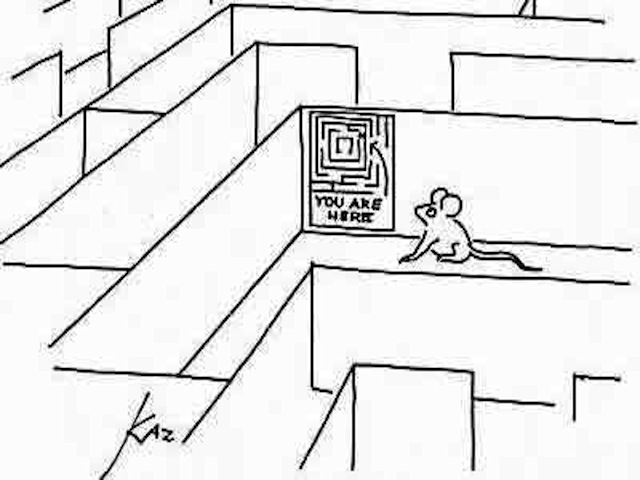By
John Townley, September 2015
An
accomplished and insightful astrologer friend has been
lately been asking the perennial question: how do we test astrology, to
prove
that it’s real, scientific, and reliable in our own eyes, and
the rest of the
world’s? More and better statistical correlations with events
or qualities and
the birth chart – like the approach the Gauquelins began so
long ago?
Comparisons with standard psychological testing and the analysis of
professional astrologers as others have done? Overviews of historical
trends
with planetary cycles, another recent favorite?
Sadly,
all those approaches and many more, involving the
major tenets of astrology and their possible reflections in human
character and
events have been repeatedly tried, and repeatedly found wanting
– certainly by
most accepted scientific standards and even by those of more astute
astrologers
themselves. There are too many conflicting definitions of the
often-vague
boundaries of what is being measured (like, character qualities) and
the
frequently-contradictory and disputed elements of what actual
probability is,
not to mention what might comprise going beyond it. The result:
astrologers and
skeptics alike think they’re right and the other side is
wrong or simply
unreasonable, and nothing is actually gained. It’s time
astrologers began to
think outside the box of vague traditional rules and spongy
psychology-dependent thinking.
So,
just as on these pages we have been attempting to explore
an entirely different, physical and environmental basis for astrology,
perhaps
an equally-singular approach to testing these (or any) theories should
be
suggested. The current approaches both to testing and to astrology
itself may
be entirely too complex, confusing, and subjective to produce anything
clear,
so radical simplification may be the way to go. Even psychology, right
now, has
the same problem, where half of their experiments don’t replicate.
But just
as much of the fogginess of psychoanalysis in explaining human behavior
is
giving way to direct neuro-chemical experimentation at both human and
animal
levels, the investigation of astrological effects might benefit from
the same
reduction of scale and complexity.


Simple testing with hamsters and chemical
reactions (colloidal silver) have been done, with results.
Basically,
why not get down to basic research, at the
simplest level? That’s what everybody else does. In biology,
chemistry, and
physics, we don’t start with the most complex behavior and
interactions, full
of unpredictable or unknown variables – we begin by
performing and observing
rudimentary experiments, and build up from there, redundantly
reconfirming and
trying not to miss a stitch as our edifice of knowledge grows.
When
the astrology revival began in the 1960s-70s, we noticed
that some of this had been attempted, but since then we seem to have
forgotten.
Prof. F.A. Brown’s observation of oyster
diurnal cycles and the daily
tide cycle, which stayed linked to the local
lunar cycle even when they were moved inland from their native coast by
1500
miles and kept in the dark. He also did later experiments with
hamsters, which
went unnoticed. Others have done similar experiments with
crabs.
Simple creatures, kept in strict laboratory conditions,
are much more likely to yield results than subjective observations of
human
behavior in widely-varying situations. And while you’re at
it, why not get even
smaller and see if bacteria or viruses change their limited behavior in
sync
with planetary cycles? All kinds of diseases are turning
out to be seasonally linked. It’s simple, and
relatively
inexpensive for starters,
you just need someone with a specific baseline knowledge of those
creatures so
you know what to look for.
And
there’s the plant world, where folklore about raising
crops by the Moon or cycles of crop predators have long existed.
Biodynamics
makes all sorts of claims, and many vinyards swear by the results. But
some
experiments (as with weathercasting potatoes) are actually getting down
to the nitty-gritty, like “leaf tides”,
but there’s room for
lots more.


Oysters react to lunar rhythms, when
relocated and in the dark...how about a look at microbes?
Then
there’s chemistry. Another forgotten experiment was the
change in the rate of precipitation of colloidal silver
at certain times
of the day or month. And since colloidal silver has antibacterial
properties,
might the two be linked in some way, perhaps jointly to a third
phenomenon (as
cycles so often are)? There are all kinds of chemical reactions that
are highly
sensitive to both initial conditions (the horoscope itself) and very
small
environmental changes. Could planetary rhythms be linked there? Highly
likely,
but you have to look.
On
the much larger scale, we have noted that although
celestial bodies’ gravity may not kick your individual body
around much
gravitationally, it moves
the boat
you’re sailing on, in
more ways than one, and not just the ocean tides –
Jupiter drags us considerably out of our orbit every time we pass
it…but how
much? Hard to find the answers, even when you Google it extensively,
but NASA
knows. Why not ask them? They just noticed that Jupiter radically perturbs Mercury,
even so close to
the Sun…they already know a lot of the answers to many of
the basic
planetary-interaction questions we should be asking, but
haven’t got around to
yet.
There
are lots of basic places to look for limited but clear
effects, upon which to build an overall compendium of how planetary,
diurnal,
and other cycles interact, eventually reaching the realms of human
behavior.
But part of the challenge will be in asking the right questions, and
looking for
resonating environmental rhythms that may entrain or even override
one-to-one
effects. You may not be looking for the whole cycle of a planet (or the
day)
directly correlated with the whole cycle of a piece of animal, plant,
or
chemical behavior. In fact, since the planetary cycles tend to be very
large
and slow, the chances are you will need to look for their resonances
and
overtone series at a much larger and faster rate, which will mean their
effects
will be tucked entirely out of sight unless you look for those
mathematical
reductions to much shorter cycles and time frames.

Once we let down the walls of our
self-imposed prison of expectation, possibilities upon up.
Even
further, perhaps we should be looking for what’s not
there as much as what is, and taking into account our definitions of
what being
there is. Do signs and houses color the planetary presences in them,
for instance, as usually thought, or do planets' behaviours as they
approach the tidally-crucial angles or magnetically-crucial season
points define our view of these segments? Which is foreground, which
background, and what's missing? That’s seems philosophical, and
it is, but
it’s quite physical as
well. When we see a blue object, we’re also not seeing the
rest of the color
spectrum which that object selectively absorbs, or at least
doesn’t actively
reflect. And, we’re only able to see one octave of light
frequency (all our
eyes are built for), when that object could be ablaze in the infra-red
or
ultra-violet, not to mention other spectra. Worse than that, we have so
under-noticed
blue itself (perhaps for evolutionary reasons) that Homer and all the
ancient
mythic sagas around the world didn’t even have a name for that
color. So who
knows what we’re
missing, because we’ve evolved to overlook things that
aren’t critical to our
survival. Yet, planetary effects have always been on our radar, so
there’s
probably a lot more there that’s important to latch on to.
But only if we do it
in a systematic way, from the bottom up.
Of
course, like most of real science, this is going to take
a long time and a lot of effort, and on the way we’re going
to find out all
kinds of new ways astrological effects manifest. But even
systematically
starting on that journey will both educate us and begin to give greater
credence to our discipline. Just as so many experiments in other
sciences are
designed to prove what we already think we know as obvious (and
Congress always
protests them as a waste of money), this is how the acquisition of
tangible (as
opposed to assumed) knowledge actually works. But that’s the
process of sorting
out what we know we know from what we know we don’t know, and
discovering where we
don’t know what we don’t know so we can ask the
right questions to uncover it.
And as what we think we know as practitioners gets proven (and some of
it gets
disproven), starting small and working up to higher levels, the better
off we
will be and the more respectable, legitimate, and reliably useful
astrology
will become.

After we open up our own box, we will find
a lot of our research already sitting in others' boxes.
Finally,
all this sounds very expensive, just like real science, and who is
going to spend that kind of money on what's currently labelled
charlatanism and pseudoscience? Probably no one, until we tag on to
what's already been and being done, of which there is a lot, when you
search for
it. If you are viewing astrology as an environmental science,
environmental research has lots of funding...just look for the bits
that overlap. Anything tied to diurnal rhythms, atmospheric and ocean
periodicities, social and financial market trends, plant and forest
growth periodicities, industrial chemical and drug production timing,
magnetic envelope variations, any or all of that and much more can be
already tied to familiar astrological cycles, periods, and harmonics
without their well-funded investigators having bothered to make the
connection. Investigators of environmental timing and interactions are
all the rage (and should be), so that is probably to first place we can
look outside of our box, and in the process reveal it's outside of
theirs, too...

